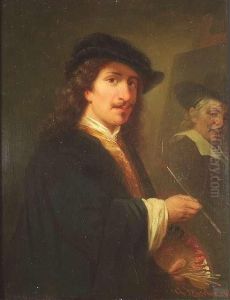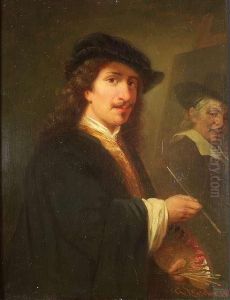Gottlob J.C. Fischer Paintings
Gottlob Johann Christian Fischer was a German artist known for his work in the late 18th and early 19th centuries. Born in 1771, Fischer’s life spanned an era of significant social and artistic change, witnessing the end of the Rococo period and the rise of Neoclassicism.
Fischer's contributions to the art world were primarily in the field of engraving and printmaking. He trained under notable masters of the time, although the specifics of his apprenticeship and early influences remain less documented compared to some of his contemporaries. His works were characterized by the fine lines and attention to detail that were hallmarks of the printmaking tradition of his era.
Throughout his career, Fischer produced a variety of works including portraits, landscapes, and illustrations for books. His engravings often depicted scenes from classical mythology, history, and literature, reflecting the Neoclassical interest in the ancient world and its values. This was in keeping with the tastes of the time, as Neoclassicism in Germany was gaining prominence over the waning Rococo style, with its more ornamental and decorative aesthetics.
Fischer's work was well-regarded in his time, and he contributed to the visual culture that accompanied the intellectual movements of the late Enlightenment. He was part of a wider network of German artists and intellectuals who were engaged in redefining art and culture in a period that was increasingly looking back to classical antiquity for inspiration.
Gottlob J.C. Fischer's death in 1829 marked the end of a career that had successfully bridged the transition between two significant artistic movements. His legacy, while perhaps not as widely recognized as some of his peers, is preserved in the engravings and prints that continue to be of interest to collectors and historians of German art. Fischer's works are representative of the technical skill and aesthetic shifts that defined the printmaking craft at the turn of the 19th century.

